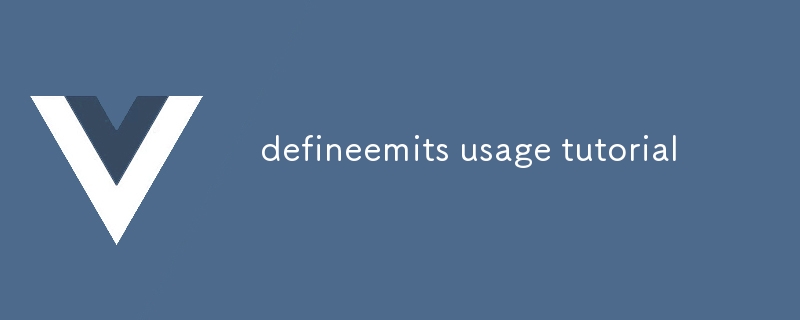Home >Web Front-end >Vue.js >defineemits usage tutorial
defineemits usage tutorial
- DDDOriginal
- 2024-08-15 14:29:451400browse
DefineEmits, an online platform, simplifies the creation of NFT projects. It offers customizable templates, flexible NFT settings, and performance tracking tools. For beginners, NFT creation involves signing up for DefineEmits, configuring project de

How to Create Your Own NFT Project with DefineEmits
1. How to use DefineEmits to create your own NFT project?
DefineEmits is a web-based platform that simplifies the process of creating and managing NFTs. To create your own NFT project with DefineEmits, follow these steps:
- Sign up for a DefineEmits account.
- Create a new NFT project.
- Upload your NFT artwork.
- Configure the NFT settings, such as the price, supply, and royalties.
- Deploy your NFT project to the blockchain.
2. What features does DefineEmits provide to support the NFT creation process?
DefineEmits provides a range of features to support the NFT creation process, including:
- A user-friendly interface that makes it easy to create and manage NFTs.
- A variety of customizable NFT templates.
- The ability to upload your own artwork or use predefined templates.
- Advanced NFT settings, such as the ability to set tiered pricing and create royalty splits.
- Real-time analytics to track the performance of your NFT projects.
3. What are the steps to create an NFT project with DefineEmits for NFT beginners?
For NFT beginners, creating an NFT project with DefineEmits is a simple process that can be summarized in the following steps:
- Sign up for a DefineEmits account.
- Create a new NFT project and give it a name.
- Upload your NFT artwork or choose a template from the gallery.
- Configure the NFT settings, such as the price and supply.
- Preview your NFT project and check for any errors.
- Deploy your NFT project to the blockchain.
The above is the detailed content of defineemits usage tutorial. For more information, please follow other related articles on the PHP Chinese website!
Related articles
See more- About vue using validator: VeeValidate3
- What are the differences between computed and method in Vue?
- Introduction to the method of turning off Eslint verification in the vue project
- Introduction to several methods of defining component templates in Vue.js
- Four places to implement AJAX in Vue applications

